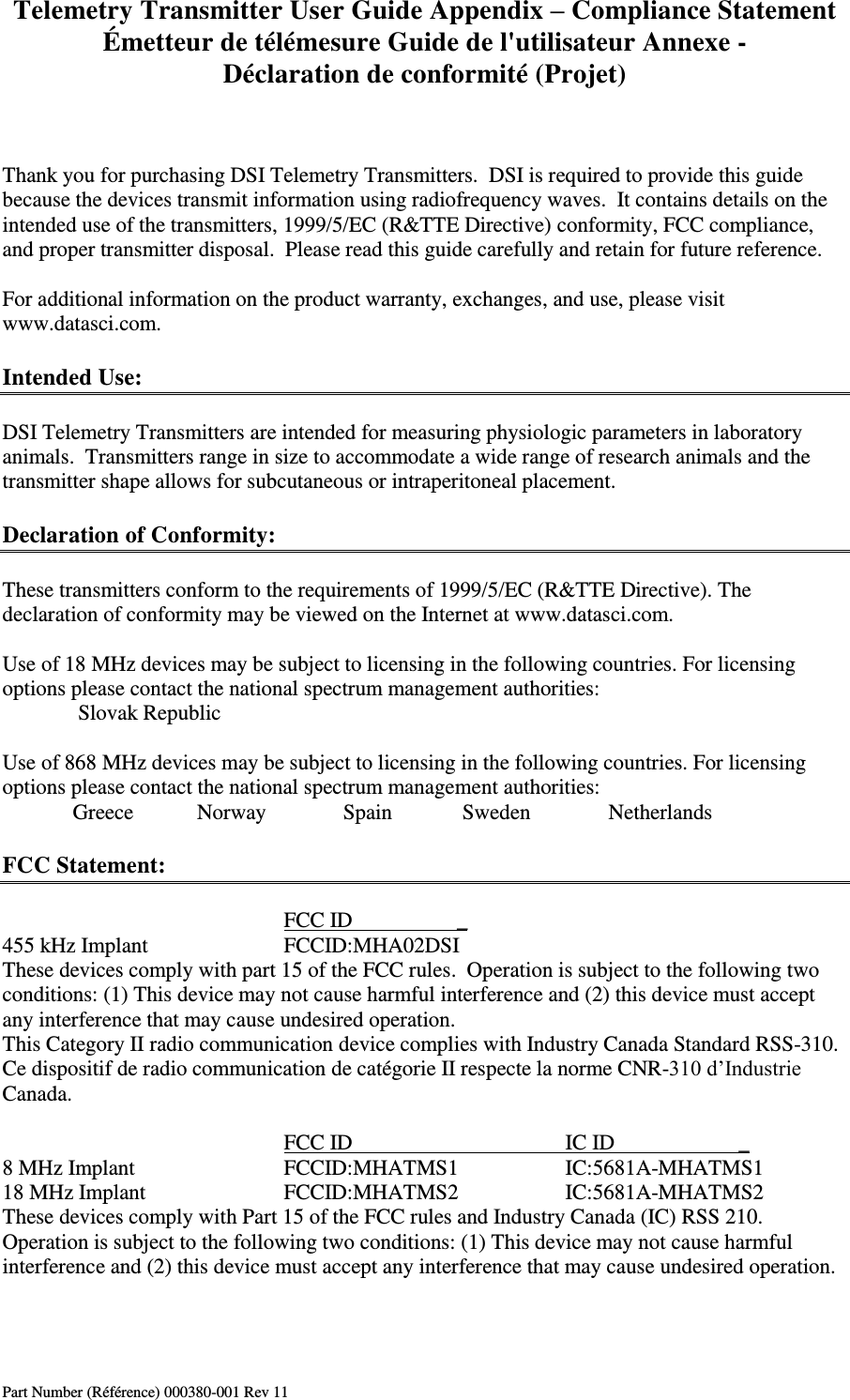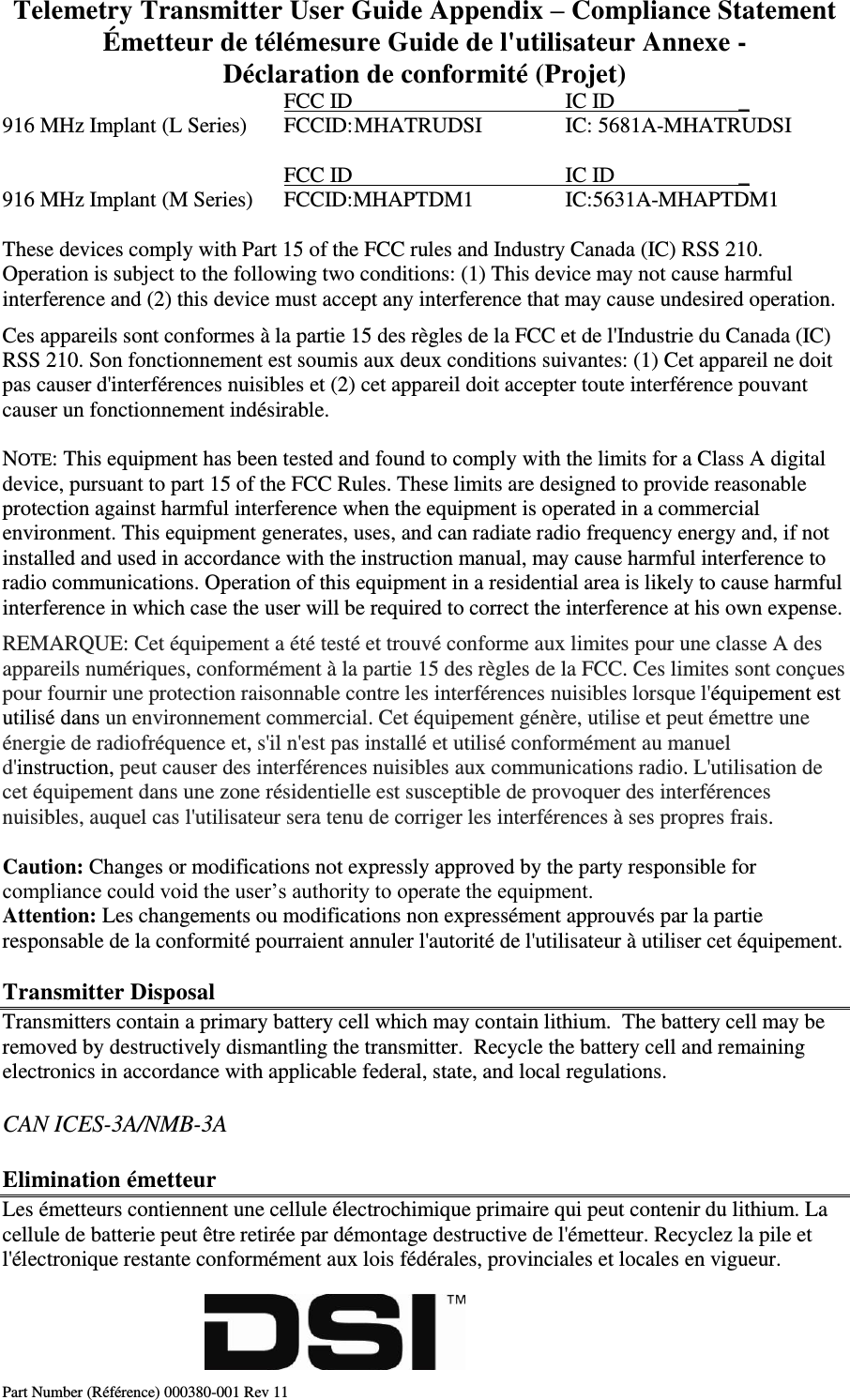Data Sciences PTDM1 Digital Animal Implant Transceiver for use in Medical Research Laboratory Environments User Manual Telemetry Transmitters Users Guide
Data Sciences International Inc Digital Animal Implant Transceiver for use in Medical Research Laboratory Environments Telemetry Transmitters Users Guide
Contents
- 1. Users Manual
- 2. Users Manual Warning Statement
Users Manual Warning Statement

